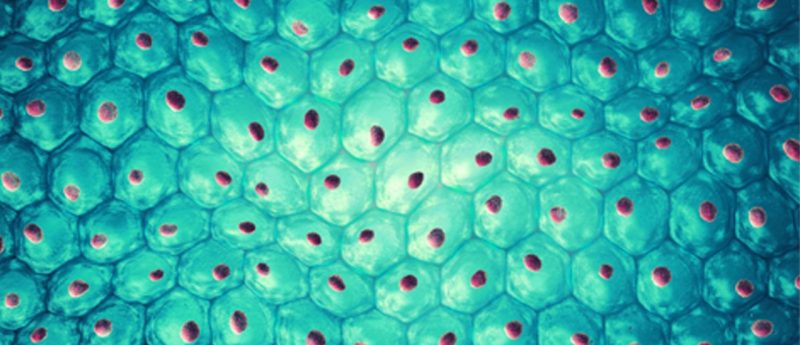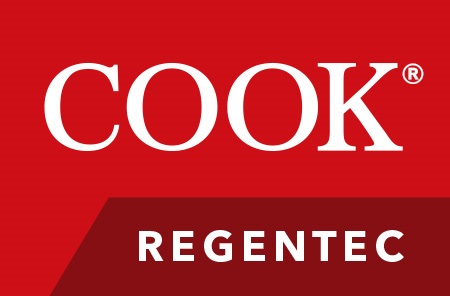Q&A transcription: Induced pluripotent stem cells (iPS cells) derived from patients with known genetic disease for modeling disease progression in vitro

Transcription of live webinar Q&A session with our expert speaker.
Thank you to everyone who attended the webinar titled ‘Induced pluripotent stem cells (iPS cells) derived from patients with known genetic disease for modeling disease progression in vitro’ on March 16, 2017. Below is a transcription of the Q&A session.
Thank you to our speaker, Jason Meyer (Indiana University Purdue University), and our webinar sponsor, Cook Regentec.

If you have any further questions, please feel free to email Cook Regentec at [email protected] or visit www.CookRegentec.com.
Q&A TRANSCRIPTION
1.) Is there a reduced efficiency of reprogramming when using “real world diseased patient” tissue, versus reprogramming of routine lab fibroblasts? For example, do patient demographic differences, like age, affect reprogramming?
I think this is a consideration certainly when developing new lines of iPS cells; I think this is, in my opinion, a bit less of an issue now than it has been traditionally over the past 10. I think one of the considerations is that when you are deriving samples from more aged populations, these cells and the somatic cells potentially have a reduced propensity for proliferation, so particularly when using reprogramming techniques that depend on the proliferation themselves, such as retroviral delivery of these reprograms and factors. This reduced proliferation in more aged samples would probably lead to a reduced efficiency of reprogramming. I think that there have been a number of really important advances in cellular reprogramming over the past several years where it’s perhaps a little bit more unclear now if there are any significant differences in reprogramming based on age, but certainly we do see some variation just from sample to sample. These things certainly should be taken into consideration when performing in [inaudible] experiments.
2.) How do you know that Caspase 3 is the effect rather than a cause?
You can’t say definitely; at this point we are just looking at that as an indicator. Traditionally, Capase 3 is one of the executioner caspases, probably most likely is more of a downstream effect rather than a cause. We have not been able to rule out the possibility that it is a cause, but at this point I guess I would just use it as a marker that the cells are degenerating.
3.) What can be done to enhance differentiation and expansion of stem cells to RGCs?
I think there are a number of approaches
that could be possible, both for the differentiation of retinal ganglion cells
(RGCs) as well as the expansion of RGCs. Approximately, one third of the cells
that we end up differentiating become retinal ganglion cells, but that leaves some
room for improvement there. I think that different media supplements and
identifying certain factors that might aid in the RGC differentiation could
improve that efficiency. The development of some neurotechnologies recently,
such as genome editing, can help give us ways to isolate those retinal ganglion
cells that we do derive. Once we get the cells to become something that is
perceiving down a retinal ganglion cell lineage, I think there’s still quite a
way to go before these become a fully-fledged functional retinal ganglion cells.
So, there are number of approaches that could be taken that might aid, not
necessarily differentiation of a retinal ganglion cell fate, but more in the
functional maturation of these cells, identifying those factors that are
responsible for making sure the retinal ganglion cells become fully functional,
and have all the physiological properties we would expect.
4.) Do you have any thoughts about the New England Journal of Medicine report on successful iPS treatment of eyes in Japan vs the loss of sight in patients at a for-profit Florida clinic? Particularly, how do we maintain public trust in light of negative news events?
I think that both of these examples provided
highlight opposing ends of the spectrum. Studies from Japan [inaudible] represent
some really exciting possibilities for stem cell research, for cell replacement
and for treatment of blindness. I think it also helps to further the proof of
principle that stem cells, iPS cells like this, can be utilized for therapeutic
purposes. It’s a very exciting, elegant study and really harnesses some of the
excitement that we all had for a number of years for the use of iPS cells to
improve human health. That being said, [thinking about] this story about the
Florida clinics that has been in the news lately, where some patients have experienced
some negative consequences (loss of vision and blindness) — I don’t have any firsthand knowledge of
these clinics, but from what I
understand of this I think it is a very unfortunate and sad story. Whenever you
have exciting technology like this that generates a lot of excitement, not just
among the scientific community but the general public really gets involved in the
hype, unfortunately there are times when some individuals out there might try
to take advantage of people’s excitement. I would also caution individuals that
are considering some kind of stem cell therapy to do your due diligence, make
sure this is a reputable source, talk to your trusted family physician and try
to get any kind of expert opinion you can on this. I think that stem cell
treatments are still very much in their infancy, the nervous system, for example,
blindness, will really stand a point of clinic trials. Clinical trials
traditionally do not cost anything because this research trying to develop this
as a therapy, so if someone is coming to you with something that sounds too
good to be true, asking for tens of thousands of dollars for a treatment, a lot
of red flags should go off and I really encourage anyone pursuing stem cell
treatment talk to all the physicians that you trust and get their op
5.) How long do you usually wait in order to see the positive Brn3 staining? Or is Brn3 expression stable for a long period of time?
In our differentiation pattern one of
the things that I think is pretty interesting is that the differentiation of
these iPS cells from the timeline really closely mirrors what we know about
human development, so really speaks to some interesting, more basic biological principles
but no less interesting nonetheless about how cells have an inherent kind of
clock to track their differentiation. Based on this we start seeing expression
with Brn3 after about 35-40 days; it usually becomes maximal by about 50 days
of differentiation total, and as long as the cells are being cared for and they
seem to be healthy, this Brn3 expression will be maintained as long we’ve been
able to really analyze these cells.
6.) How do you implant iPS cells into patients?
There could be a variety of answers to
this question because it really depends on the application. If we are going to
focus on the retina, as I’ve been talking about, there’s a couple different
ways but it involves some kind of injection through a very fine needle into the
eye. It’s all going to depend on which types of retinal neurons you’re trying
to either restore or replace, so we’re talking about some of those cells that
are more in the inner retina, like the retinal ganglion cells. A lot of
strategies are being developed, typically reliant on transplantation into cells
into the vitreous cavities. If we are talking about the outer retina, like the
photoreceptors, a lot of strategies are involving the direct injection of the
cells into a very small space termed the sub retinal space, between the core
retina on the blood supply and just below the retina outside the photoreceptors.
These approaches certainly would differ for different systems if you’re talking
about other parts of the nervous system, or if we get out to other areas, such
as the hematopoietic system or cardiac system, transplantation strategies will
have to be more invidualized.
To see Dr. Meyer’s full presentation,
WATCH ON DEMAND.